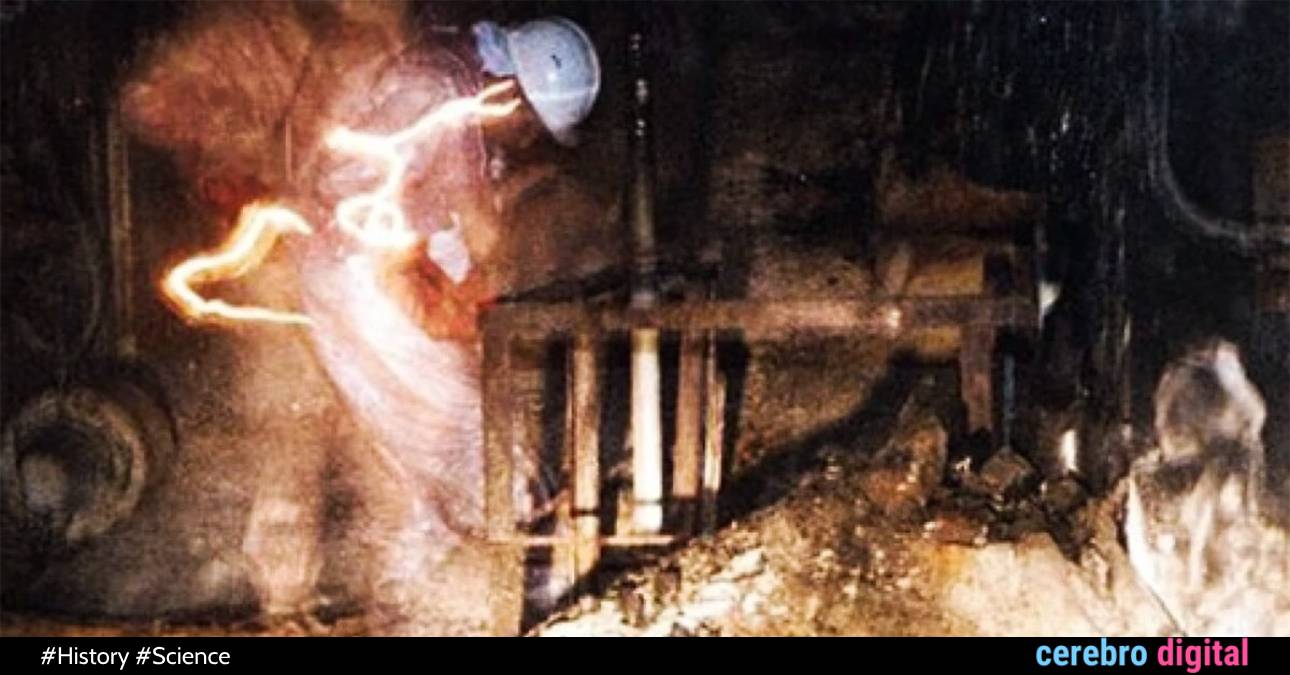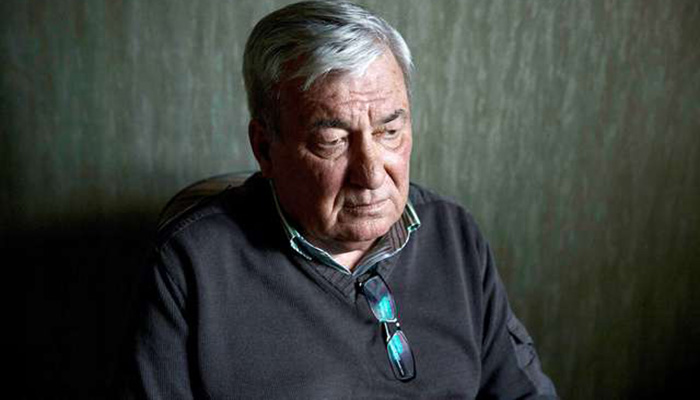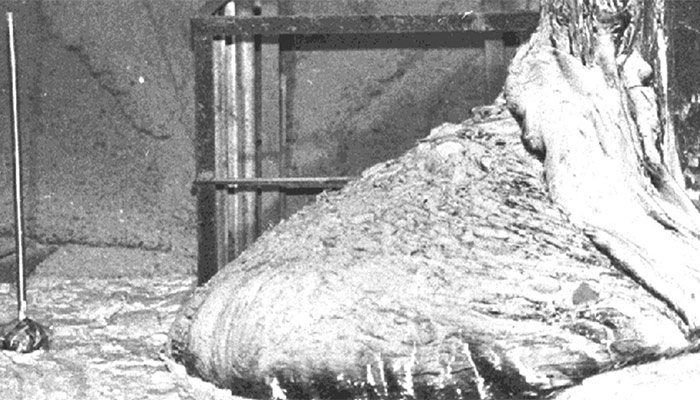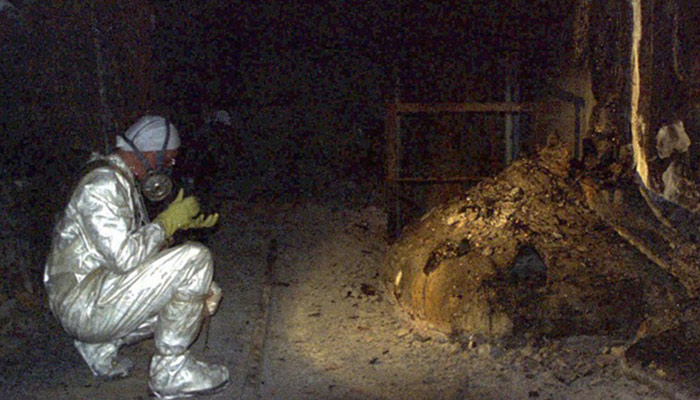
Although it appears to be a still from a horror movie, it is indeed an authentic portrait. In this ghostly image, we see the former deputy director of the Chernobyl plant, Artur Korneyev. But what makes it so astonishing?
Well, the man in the picture is standing next to the deadly “Elephant’s Foot”, located inside Reactor Number 4. This detail turns the photo into the most dangerous selfie in history.
The Story Behind Artur Korneyev’s Photo

On April 26, 1986, Reactor Number 4 of the Chernobyl nuclear power plant in Ukraine exploded, causing a massive release of radioactive material into the environment. The catastrophe was so devastating that its effects are still felt in the surrounding area today. However, the most shocking part of the disaster remains inside the plant’s ruins.
It’s a massive mass known as the “Elephant’s Foot,” named for its curious shape, and it’s composed of a rare substance called corium. It measures approximately 3 meters in length, and just a few minutes of exposure to it are enough to kill an adult due to its high levels of radiation.
But if no one can approach it, how was it discovered? Thanks to a eerie photograph that looks like it’s taken from a macabre story. The grim image was part of the photographic archive sent by the Ukrainian government to the United States in the late 1990s. It was at this time that the Chernobyl Center for Nuclear Safety, Radioactive Waste and Radioecology was established after the dissolution of the Soviet Union.
Meanwhile, at the bottom of the photograph, it reads:
“Artur Korneyev, deputy director of the shelter, views the Elephant’s Foot lava in Chernobyl.”
Interestingly, there is no mention of the photographer.
Likewise, the rest of the photos in the archive do not reference the photographer either. The only person mentioned is Artur Korneyev, which was unusual for specialists who initiated an investigation.
To their surprise, they discovered that the photographer had been Artur Korneyev himself, who took the pictures automatically. They were essentially old-fashioned “selfies” taken using the timer on his camera.
The Discovery of the Elephant’s Foot

Several months after the disaster, a team of engineers was sent to investigate the remnants of the reactor. In their search, they came across a colossal mass in the basement of the plant, which they dubbed the Elephant’s Foot due to its resemblance to the animal’s limb.
The team took photographs and samples, which revealed the lethal levels of radiation it emitted. This discovery was a crucial piece in the investigation of the Chernobyl disaster, helping scientists understand the extent of the damage caused by the explosion.
It’s worth noting that corium, which makes up the Elephant’s Foot, has only formed five times in the world: in Chernobyl, the Three Mile Island accident in 1979, and three times in the Fukushima Daiichi reactor disaster in 2011.
As a result, specialists remain uncertain about its exact composition, as its nature is too radioactive. However, the color suggests that it contains a significant amount of silica.
The Aftermath of the Tragedy

Between May and November 1986, a shelter was constructed to help seal the radioactive materials inside Reactor Number 4. This massive sarcophagus is made of steel and concrete and contained up to 95% of the original material.
But in 1996, Artur Korneyev visited the site with a mission: to locate the fuel inside the structure to better understand the radiation emitted by the Elephant’s Foot. It was during this visit that he took the various photographs.
Indeed, they served as a warning to the rest of the world about the poor condition of the structure. As a result, a group of seven nations funded the “New Safe Confinement” project to build a more robust shelter. The structure was completed in 2016, as part of a larger project to secure the entire area around the nuclear plant for the next 100 years.
Interestingly, Artur Korneyev’s most famous photo has a grim appearance, although there are many others. Why does the image look this way? Some experts believe it’s primarily because the only light in the room is from his flashlight. This means that the exposure time is up to 2-3 seconds. Moreover, with old cameras with flash, a person had to remain still for the same time to obtain a solid image.
Consequently, it’s possible that the camera took several images before he positioned himself correctly, giving it that ghostly appearance. However, the archive contains other stable photographs that didn’t become as popular.
Nevertheless, Artur Korneyev’s photograph circled the world, revealing the extent of the nuclear disaster. Undoubtedly, one of the most impactful images in history.
References:
- Mortal and Radioactive: The World’s Most Dangerous Selfie – An article by historylatam.com https://www.historylatam.com/culturas-y-comidas/mortal-y-radioactiva-asi-es-la-selfie-mas-peligrosa-del-mundo
- Chernobyl’s Elephant’s Foot: A stark reminder of a nuclear disaster – An article by Tejasri Gururaj, writer for interestingengineering.com https://interestingengineering.com/science/chernobyls-elephants-foot-nuclear-disaster
